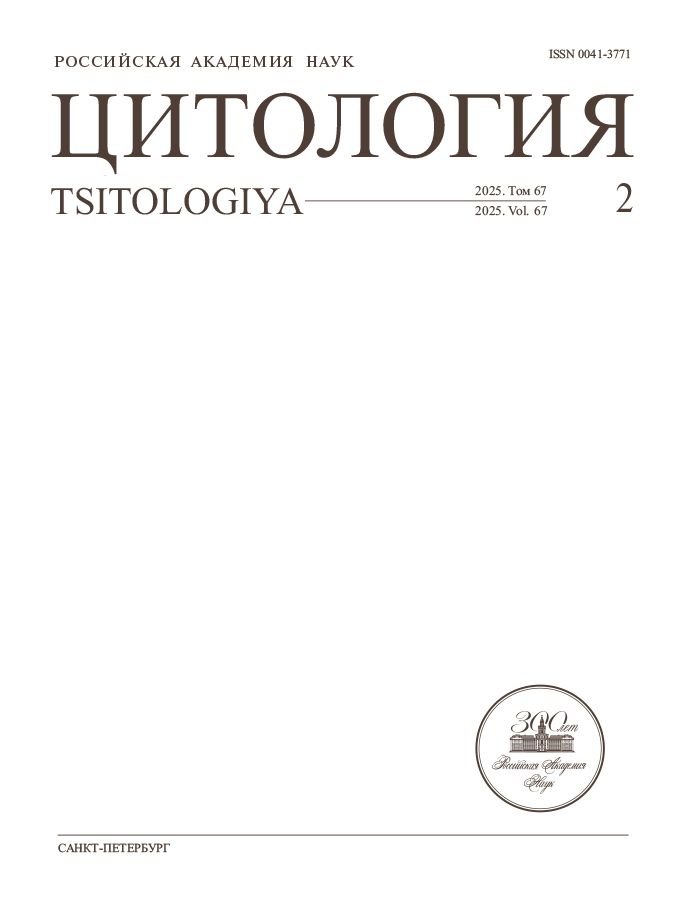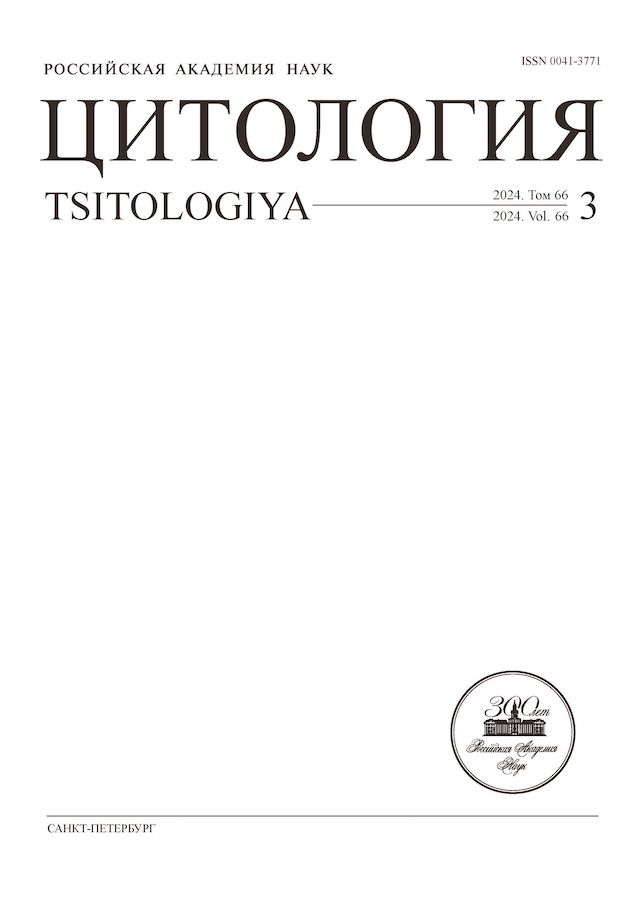Genetically Encoded Biosensor HyPer as a Tool for Quantification of Intracellular Hydrogen Peroxide Concentrations
- Authors: Lyublinskaya O.G.1, Ivanova J.S.1
-
Affiliations:
- Institute of Cytology RAS
- Issue: Vol 66, No 3 (2024)
- Pages: 223-233
- Section: Articles
- URL: https://rjonco.com/0041-3771/article/view/669591
- DOI: https://doi.org/10.31857/S0041377124030026
- EDN: https://elibrary.ru/PERHTF
- ID: 669591
Cite item
Abstract
This mini-review systematizes information on methods for quantitative assessment of intracellular hydrogen peroxide concentration based on the use of a genetically encoded peroxide sensor HyPer. Two approaches are being considered: 1) calibration of the biosensor using exogenous hydrogen peroxide, based on assessing the rate of peroxide penetration into cells and intracellular peroxidase activity; 2) direct determination of the intracellular peroxide content, based on measuring the level of oxidation of the biosensor, the oxidation reaction constant and the reduction reaction constant of HyPer in the cells. The use of these methods makes it possible to solve a wide range of tasks in cellular redox biology — to determine the range of physiological and damaging concentrations of hydrogen peroxide in cells, to evaluate the effectiveness of the antioxidant defense system in various cellular compartments under conditions of oxidative stress, to determine the contribution of various enzymatic systems to the peroxidase activity of cells, and to characterize antioxidant defense systems in various biological contexts (in the process of cellular senescence, differentiation, reprogramming, during the development of pathologies). The described methods can be adapted for other genetically encoded hydrogen peroxide biosensors.
Full Text
About the authors
O. G. Lyublinskaya
Institute of Cytology RAS
Author for correspondence.
Email: o.lyublinskaya@mail.ru
Russian Federation, St. Petersburg, 194064, Tikhoretskii pr., 4
J. S. Ivanova
Institute of Cytology RAS
Email: o.lyublinskaya@mail.ru
Russian Federation, St. Petersburg, 194064, Tikhoretskii pr., 4
References
- Antunes F., Cadenas E. 2000. Estimation of H2O2 gradients across biomembranes. FEBS Lett. V. 475. P. 121.
- Belousov V. V., Fradkov A. F., Lukyanov K. A., Staroverov D. B., Shakhbazov K. S., Terskikh A. V., Lukyanov S. A. 2006. Genetically encoded fluorescent indicator for intracellular hydrogen peroxide. Nat. Methods V. 3. P. 281.
- Bilan D. S., Belousov V. V. 2016. HyPer family probes: state of the art. Antioxidants Redox Signal. V. 24. P. 731.
- Bilan D. S., Pase L., Joosen L., Gorokhovatsky A. Y., Ermakova Y. G., Gadella T. W., Grabher C., Schultz C., Lukyanov S., Belousov V. V. 2013. HyPer-3: a genetically encoded H2O2 probe with improved performance for ratiometric and fluorescence lifetime imaging. ACS Chem. Biol. V. 8. P. 535.
- Brito P. M., Antunes F. 2014. Estimation of kinetic parameters related to biochemical interactions between hydrogen peroxide and signal transduction proteins. Front. Chem. V. 2. P. 82.
- Huang B. K., Sikes H. D. 2014. Quantifying intracellular hydrogen peroxide perturbations in terms of concentration. Redox Biol. V. 2. P. 955.
- Huang B. K., Stein K. T., Sikes H. D. 2016. Modulating and measuring intracellular H2O2 using genetically encoded tools to study its toxicity to human cells. ACS Synth. Biol. V. 5. P. 1389.
- Ivanova J., Guriev N., Pugovkina N., Lyublinskaya O. 2023. Inhibition of thioredoxin reductase activity reduces the antioxidant defense capacity of human pluripotent stem cells under conditions of mild but not severe oxidative stress. Biochem. Biophys. Res. Commun. V. 642. P. 137.
- Lee C., Lee S. M., Mukhopadhyay P., Kim S. J., Lee S. C., Ahn W. S., Yu M. H., Storz G., Ryu S. E. 2004. Redox regulation of OxyR requires specific disulfide bond formation involving a rapid kinetic reaction path. Nat. Struct. Mol. Biol. V. 11. P. 1179.
- Lim J., Langford T., Huang B., Deen W., Sikes H. 2016. A reaction-diffusion model of cytosolic hydrogen peroxide. Free Radic. Biol. Med. V. 90. P. 85.
- Lyublinskaya O. G., Antonov S. A., Gorokhovtsev S. G., Pugovkina N. A., Kornienko J. S., Ivanova J. S., Shatrova A. N., Aksenov N. D., Zenin V. V., Nikolsky N. N. 2018. Flow cytometric HyPer-based assay for hydrogen peroxide. Free Radic. Biol. Med. V. 128 P. 40.
- Lyublinskaya O., Antunes F. 2019. Measuring intracellular concentration of hydrogen peroxide with the use of genetically encoded H2O2 biosensor HyPer. Redox Biol. V. 24: 101200.
- Malinouski M., Zhou Y, Belousov V, Hatfield D, Gladyshev V. 2011. Hydrogen peroxide probes directed to different cellular compartments. PLoS One. V. 6: e14564.
- Meyer A. J., Dick T. P. 2010. Fluorescent protein-based redox probes. Antioxid. Redox Signal. V. 13. P. 621.
- Milkovic L., Zarkovic N., Saso L. 2017. Controversy about pharmacological modulation of Nrf2 for cancer therapy. Redox Biol. V. 12. P. 727.
- Mishina N., Bogdanova Y., Ermakova Y., Panova A., Kotova D., Bilan D., Steinhorn B., Arnér E., Michel T., Belousov V. 2019. Which antioxidant system shapes intracellular H2O2 gradients? Antioxid. Redox Signal. V. 31. P. 664.
- Mishina N., Markvicheva K., Bilan D., Matlashov M., Shirmanova M., Liebl D., Schultz C., Lukyanov S., Belousov V. 2013. Visualization of intracellular hydrogen peroxide with HyPer, a genetically encoded fluorescent probe. Methods Enzymol. V. 526. P. 45.
- Pak V. V., Ezeriņa D., Lyublinskaya O. G., Pedre B., Tyurin-Kuzmin P.A., Mishina N. M., Thauvin M., Young D., Wahni K., Martínez Gache S. A., Demidovich A. D., Ermakova Y. G., Maslova Y. D., Shokhina A. G., Eroglu E., et al. 2020. Ultrasensitive genetically encoded indicator for hydrogen peroxide identifies roles for the oxidant in cell migration and mitochondrial function. Cell Metab. V. 31. P. 642.
- Sies H. 2021. Oxidative eustress: on constant alert for redox homeostasis. Redox Biol. V. 41: 101867.
- Sies H., Berndt C., Jones D. P. 2017. Oxidative stress. Annu Rev. Biochem. V. 86. P. 715.
- Sies H., Jones D. P. 2020. Reactive oxygen species (ROS) as pleiotropic physiological signalling agents. Nat. Rev. Mol. Cell Biol. V. 21. P. 363.
- Sporn M. B., Liby K. T. 2012. NRF2 and cancer: the good, the bad and the importance of context. Nat. Rev. Cancer. V. 12. P. 564.
- Zenin V., Ivanova J., Pugovkina N., Shatrova A., Aksenov N., Tyuryaeva I., Kirpichnikova K., Kuneev I., Zhuravlev A., Osyaeva E., Lyublinskaya E., Gazizova I., Guriev N., Lyublinskaya O. 2022. Resistance to H2O2-induced oxidative stress in human cells of different phenotypes. Redox Biol. V. 50: 102245.
- Zheng M., Åslund F., Storz G. 1998. Activation of the OxyR transcription factor by reversible disulfide bond formation. Science. V. 279. P. 171 https://doi.org/10.1007/s10561-022-10011-x
Supplementary files













